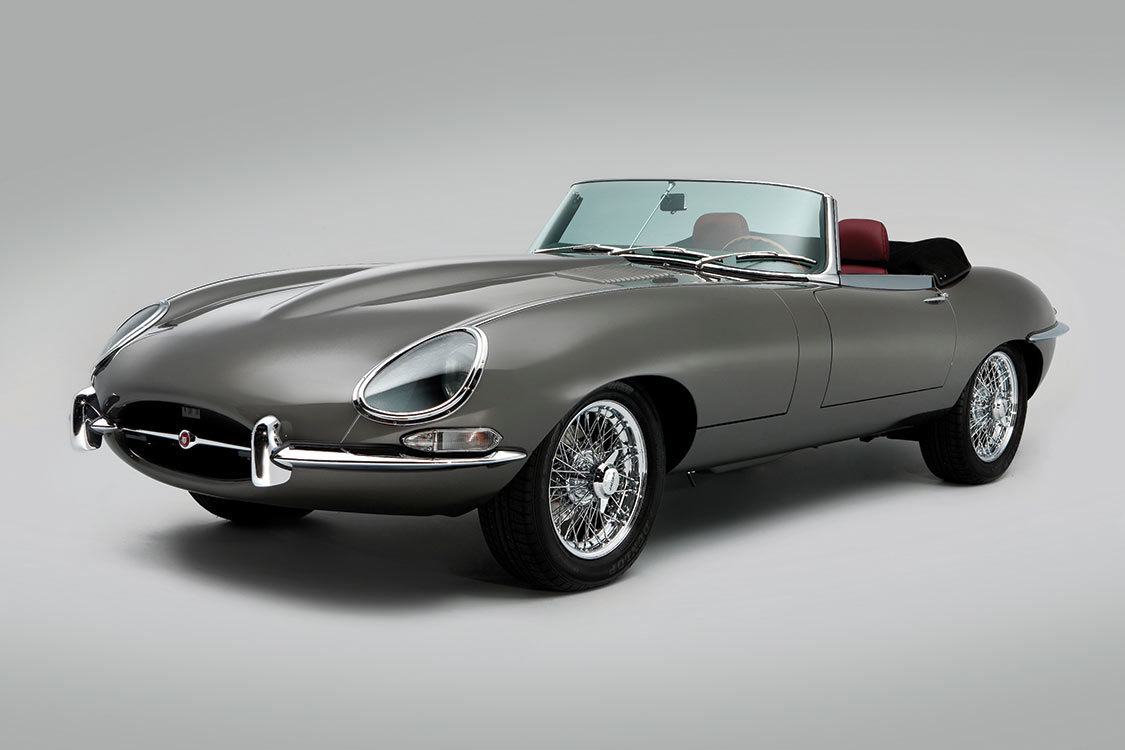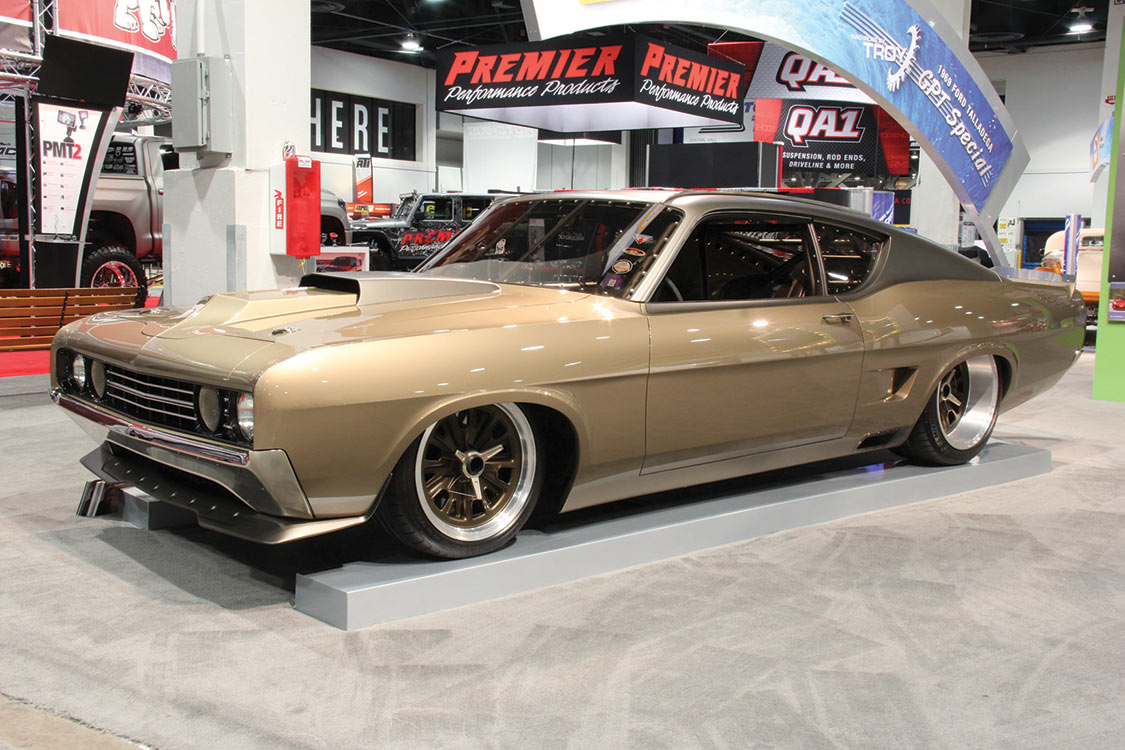 Kevin Wilson
.
May 24, 2022
.
All Feature Vehicles
Kevin Wilson
.
May 24, 2022
.
All Feature Vehicles

The world’s first stretched E-Type has been found and will hit the London show circuit soon. Built in 1968, the left-hand drive Jaguar E-Type series 1 4.2 roadster has been stretched by 4 ½ inches during a major restoration carried out by Classic Motor Cars Limited of Bridgnorth (CMC), in the United Kingdom.
Nick Goldthorp, managing director of CMC, said, “This is something that we have never done before. Our client wanted the interior legroom of a Series 3 V-12 E-Type but the aesthetics of a Series 1 car. The car is phenomenal to drive. This is the E-Type that Jaguar Cars should have built. The extra space makes all the difference and actually alters the whole attitude of the car.”
During the rebuild, the owner, a client in the United States who intends to travel widely in country, requested a trailer be built, so CMC built it from two E-Type rearends joined together. The trailer is connected to the car via a removable tow hitch, which locks into position through the reverse light aperture. The reverse light hides the hitch mechanism when the trailer is not in use.
Goldthorp added, “The stretched E-Type I have conceived sits between the Series 1 and the subsequent vehicles produced after the merger and formation of British Leyland, when the design of the cars underwent several transformations as a consequence of cuts in production costs and the need for more space that resulted in the Series 2, 2+2 and Series 3 V-12.
“We added four and a half inches to the floor pan, which will give the legroom of the V-12 plus an additional one inch if required. The V-12 was actually nine inches longer than a Series 1, but a lot of the additional room was behind the seats as storage and was not required on our project. By adding four and a half inches to the length of the car, we were able to retain the overall look of the Series 1 and also turn this E-Type into a unique car.”
The roof line was raised by 1.25 inches above the driver’s head and the trunk floor was lowered and reshaped to build in a 20-gallon fuel tank and to allow a wider spare wheel as the car was fitted with 16-inch diameter wire wheels shod with lower profile radials.
Ten years after it was installed, Ford still claims it has the largest “living roof” on top of its Dearborn, Michigan, final assembly building, which is part of the Ford Rouge Center.
“The living roof also serves as a cost-effective alternative to regular roof maintenance while keeping heating and cooling costs in check for the factory underneath.”
Approximately eight football fields long, the Ford living roof, which equates to a 10.4-acre garden, is home to various plants, insects and even a few animals, according to Ford. The company claims “the living roof also serves as a cost-effective alternative to regular roof maintenance while keeping heating and cooling costs in check for the factory underneath.” Now that’s really going green.
Once a year, the automotive industry invades Las Vegas for the annual SEMA Show. The yearly gathering has rapidly earned the status of being one of the largest trade shows in Vegas since it fills the Las Vegas Convention Center and Sands Convention Center with the APAI sister show.
While final attendance figures are being audited, according to SEMA, more than 126,000 show credentials were issued prior to the event, with more processed onsite, which SEMA says is a 7% increase over the previous year, making it the largest SEMA Show ever. Estimates put attendance at well over 150,000 for the four-day event.
SEMA reps also said there were 2,381 exhibiting companies, representing all facets of the automotive specialty-equipment market from accessory and appearance products, performance products, wheels, tires and suspension, basically anything and everything anyone could want to personalize the more than 200 million cars, trucks, SUVs and power-sport vehicles on and off the road.
The SEMA Show is a trade show produced by the Specialty Equipment Market Association (SEMA), a nonprofit trade association founded in 1963. Since the first SEMA Show debuted in 1967, the annual event has served as the leading venue bringing together manufacturers and buyers within the automotive specialty equipment industry.

Unfortunately, the show is not open to the public, but SEMA has a huge automotive display outside the Convention Center with hundreds of hot rods, customs, muscle cars and trucks. And, at the end of the event on Friday evening, SEMA puts on its annual cruise where spectators can see all of the vehicles that were on display at the show.
In an era when multi-year champions are reviled—Jimmy Johnson was regularly booed as he garnered his 6th NASCAR championship—John Force is universally loved by drag racing fans.
Perhaps this degree of support comes from the fact John is no “silver spooner,” he’s an American success story, rising from humble beginnings.
After years of frustration, Force won his first NHRA national event in 1987. From there his career rocketed. The current national event Wally count is 138, making Force the winningest driver in NHRA history and its only pro driver with more than 1,000 round wins. This translates into a record 28 consecutive Top 10 finishes. The first Force World Championship came in 1990 and again in ’91. Then he reeled off an amazing 10 straight from ’93 through 2002, repeating in ’04, ’06 and now 2013. Yes, 16 NHRA Funny Car World Championships!
Force’s accomplishments have earned him a host of accolades, including his induction into the prestigious International Motorsports Hall of Fame and the Motorsports Hall of Fame of America.
He’s been selected as Driver of the Year for all of American motor racing, the first drag racer ever selected as such. He was also named to the Auto Racing All-America Team 15 times, and he set a record with 10 consecutive appearances. Additionally, Force has earned the Jerry Titus Memorial Award as the All-American Driver a record four times.
With no retirement date in sight, John Force’s list of accomplishments will likely grow longer.
We use cookies to enhance your browsing experience, serve personalized ads or content, and analyze our traffic. By clicking "Accept All", you consent to our use of cookies. Visit our Cookie Policy for more info.
Notifications
Share Link